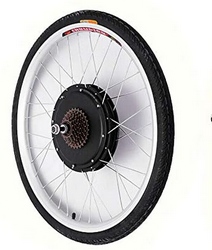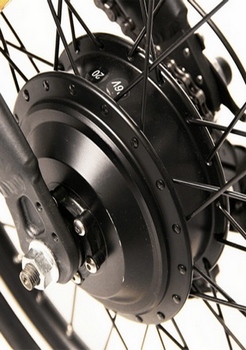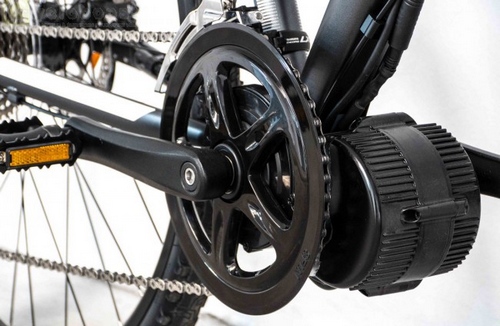It involves combining a bicycle, an electric assistance system and solar equipment. We will describe below the necessary elements and consider the different possibilities available.
The bike
It is possible to use either to use a commercial electrically assisted bicycle, or to use a conventional bicycle to which an electrification kit is added.
A commercial electric bike
In this case, be aware that many major manufacturers prevent the user from recharging the battery while the engine is running. This then makes it necessary to have 2 batteries: one is recharged by the solar panel while the other supplies the motor, which requires the batteries to be periodically exchanged. We understand that this system is not the most practical.
In addition, some manufacturers even prevent the battery from being charged other than by connecting it to the mains charger, which further complicates the task.
But some rarer commercial bikes do not have these limitations and can be easily transformed into solar bikes.
A simple bike with added electric assistance
On reading paragraph 1.1, we understand that it is often simpler and more efficient to install an electric assistance system on a non-electric bicycle.
Two ways to do it:
– either by buying a complete kit (advantages: simplicity / disadvantages: if the system is “proprietary”, the user cannot use parts from another brand),
– either by selecting each element (advantages: the choice of each element is much larger, one can better adjust the elements to one’s own needs, to one’s practice / disadvantages: the extent of the possibilities can confuse the beginner).
Read the rules in France: [ Note from the Management of legal and administrative information (Prime Minister)]
Different types of bike
The choice of bike is important because it will often determine how to install the solar panels, on the bike itself and/or on a trailer.
Many types of bikes have been tested, according to everyone’s tastes:
- classic upright bike with trailer, single wheel or 2 wheels,
- classic upright bike with solar roof,
- transformed straight-lying tandem,
- cargo bike, with panels on the bike or on the roof,
- recumbent bike with panels on the roof, and sometimes in trailer,
- trike, one-seater or tandem, with panels on the roof, and sometimes in tow,
- mobile bike with panels on the roof, and sometimes in tow.
The electric assistance system
It includes at least a battery, a motor, a motor controller (sometimes integrated inside the motor), a control and display console. Other elements can be added: pedaling sensor, torque sensor, speed sensor, handlebar accelerator…
The battery
The batteries supplied with some commercial bicycles cannot be charged during use, which greatly complicates their integration into a solar bicycle.
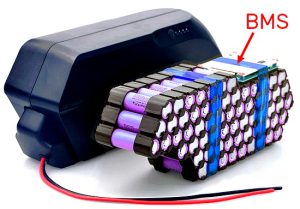
Battery Features
The main characteristics of a battery are:
– chemical technology: today, most bicycle batteries use Litium-Ion technology.
– nominal voltage; The most widespread values today are 36 Volts and 48 Volts.
– the capacity, expressed in Amperes-hour or in Watts-hour. This value reflects the amount of energy the battery is able to store and release.
Find out more about: battery components
High capacity cells (3500 mAh) have the advantage of being able to store more energy at equal weight. In other words, at equal capacity, the battery will be lighter, which is an advantage for the solar cyclist. But these high capacity cells are often more expensive.
It is important to choose good quality cells. Indeed, one finds on the market of the cells of lesser quality which sometimes do not answer the announced capacity, or whose longevity will be shorter, when it is not a question of security. It is reasonable to check whether the cells of a battery come from major manufacturers whose quality is recognized as Samsung, LG, Sony or Panasonic/Sanyo…
The engine
There are different types of motors, each with advantages and disadvantages. Knowing them will be an asset to make the best choice according to the intended use.
– Direct Drive hub motor
It is inserted into a wheel instead of the hub, this Direct Drive type has no gears inside. Available for front or rear wheel. May be installed on a trailer.
Advantages: reliable, no maintenance. This type of motor can generate electricity during braking and on descents (if associated with the appropriate controller), thus allowing the battery to be recharged.
Disadvantages: slightly heavier (~4 to 9kg). In certain conditions, it may tend to heat up on steep hills, the assistance then becoming less effective.
– reduced “wheel” motor
Inserted into a wheel instead of the hub, it has gears inside. Available for front or rear wheel. Can optionally be installed on a trailer.
Advantages: reasonable weight (~2.5 to 5kg), often effective on hills. It does not brake the bike when pedaling without assistance.
Disadvantages: Gears to be maintained regularly or even changed after several thousand km. No regeneration on descents (except 1 model).
– Mid-drive motor
This motor is inserted in place of the original crankset, it has gears inside.
Advantages: reasonable weight (~4 kg), effective on hills. It does not brake the bike when pedaling without assistance.
Disadvantages: Gears to be maintained regularly and changed after several thousand km. No regeneration on descents.
The motor controller
Depending on the system, the controller can be independent or integrated into the engine block. It is very often independent in wheel motor systems and often integrated into pedal motors. Its role is to manage the energy supplied to the motor, depending on several data (chosen level of assistance, speed, energy available in the battery, signal from the torque or pedaling sensor, etc.).
The control and display console
It gives indications to the user (ex: speed, level of assistance, battery voltage, distance travelled…) and moreover, it allows him to dialogue with the system (at least to choose the level of assistance).

In advanced systems, such as the Cycle-Analyst, many parameters can be displayed: motor consumption, solar production, motor temperature in addition to the traditional levels of assistance, distance, speed, etc.
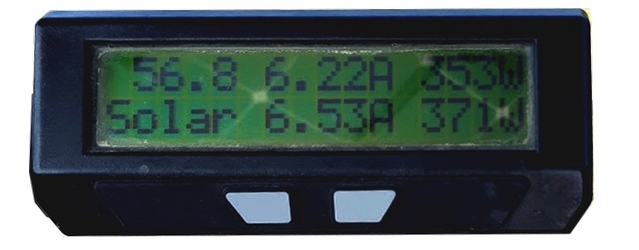
Example: in the photo above, we see a motor consumption of 353W at this precise moment, while the solar production is 371W.
The pedaling sensor / the torque sensor
Depending on the system, this sensor may be separate or integrated into the engine block, in which case it is not visible. 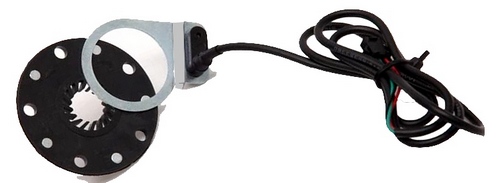
The most advanced systems have a sensor of torque which measures the power given by the cyclist, the others of a pedaling sensor which measures the rhythm of the cyclist’s pedaling.
The speed sensor
Depending on the system, this sensor may be separate or integrated into the engine block.
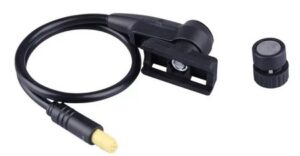
The handlebar throttle
It is an optional accessory. It is authorized in France only for starting, for example after a red light. It is often very useful, especially on recumbent bikes, for hill starts.
The solar charging system
Solar panels cannot be connected directly to the battery, they must be connected through a solar regulator.
Solar regulators
This is responsible for adjusting the voltage to that of the battery (36 or 48 Volts for example) and modifying the current (Amps) according to the amount of light energy provided by the sun.
The most common type among solar cyclists is the “boost” MPPT technology regulator. The regulator’s MPPT technology ensures the best possible efficiency in the conversion of electrical energy. The qualification “boost” means that the voltage of the panels at the input of the regulator must be lower than that of the battery and the regulator then adjusts the output voltage to that of the battery.
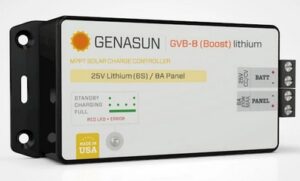 |
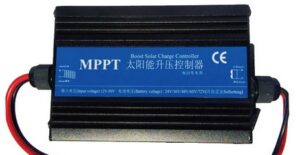 |
Solar panels
Technology
The panels to be preferred are flexible monocrystalline silicon panels: they are light and have a good conversion efficiency of light energy into electrical energy. It is better to forget the models developed for the roof of houses, in polycrystalline silicon (very heavy, lower yield).
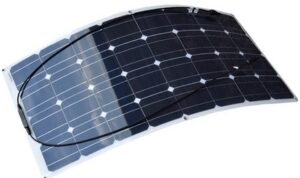 |
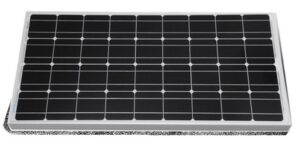 |
Article : comment choisir ses panneaux solaires
Format
The solar bike designer will have to choose the format of his panels according to his bike, the supporting structure and … his preferences in terms of driving comfort on the road.
To participate in the Sun Trip, the width of the panels must not exceed 99cm which corresponds to 7 photovoltaic cells (in the cost dimensions of 12.5cm x 12.5cm). But the traditional formats have rather even numbers of cells, in practice, a majority of solar cyclists now have panels of 6 cells in width.
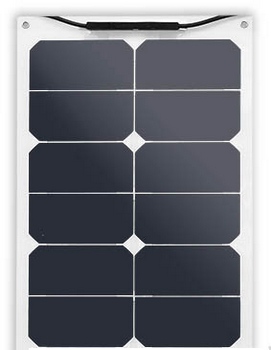 |
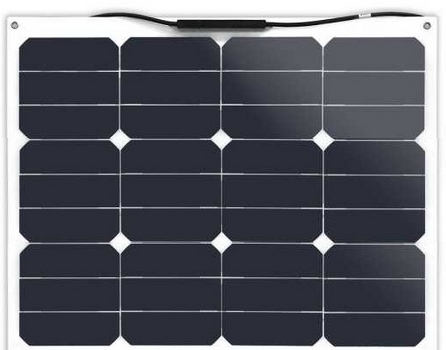 |
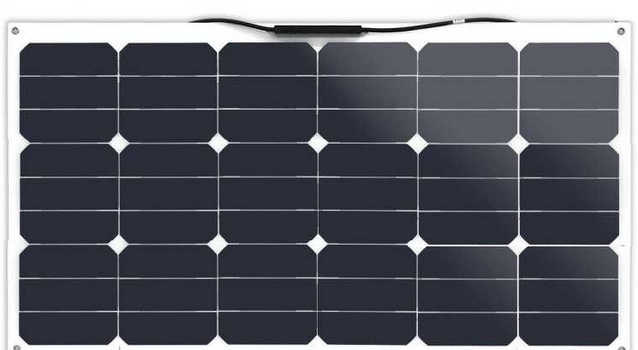 |
| 2 cellules =28cm | 4 cellules =54cm | 6 cellules =80cm |
The length of the panels will depend on the bike chosen, or the trailer…
Attention: the size of the panel directly influences its electrical characteristics, it is advisable to ensure the adequacy between panels, regulators and battery.
Quality
The quality of a panel, in terms of electricity production, depends a lot on the quality of the photovoltaic cells that make it up. In the data sheet, the mention of a major cell manufacturer is a guarantee of quality.
However, the major manufacturers sort their cells and sell them in different quality grades. But the guard is rarely mentioned by the manufacturer.
The supporting structure of the solar panels
How to transport solar panels on a bicycle? This is one of the important questions that solar cyclists ask themselves. This question is also related to the surface of the panels that one wishes to install.
Installing 1 m² of panels is quite simple, but installing 2.5 m² of panels is more complicated.


